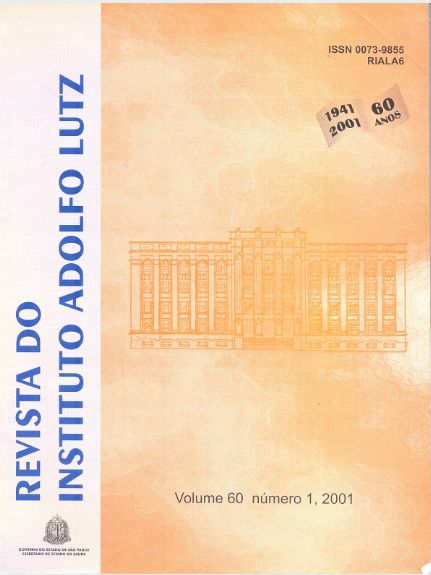Abstract
Bakery industries have been developing and expanding the range of products offered for commercial sale. Pizzas are being well accepted, because they are cheap, easy to prepare and have a good nutritional value. The purpose of this study was to evaluate the chemical composition, quality indexes and their relation with colony-forming units (CFU) under refrigeration and room temperature. Results showed that the refrigeration temperature didnt influence the increase of molds and yeast contamination during storage periods. The level of these microorganisms contents was above maximum limits established by national legislation. This situation suggests that sanitary conditions, during the process, package and storage of the product contribute to the increase of contamination under or without refrigeration temperature. The values of pH and acid index (5,7 and 1,0 mg NaOH.
References
1. Abecassis, J. Influence of extrusion conditions on extrusion speed, temperature and pressure in the extruder and on pasta quality. Amer. Assoc. Cereal Chem., 71(3): 247-253, 1994.
2. Antognelli, C. The manufacture and applications of pasta as a food and as a food ingredient. J. Food Technol., 15:125-145, 1980.
3. Association of Official Analytical Chemists - AOAC. Official methods of analysis. Arlington, Virgínia, 1995.
4. Badiale-Furlong, E. Avaliação de incidência de micotoxinas em microbiota fúngica em produtos de panificação. Rio Grande, 1996. Relatório técnico encaminhado à FAPERGS.
5. Brewer, M.S. et al. Sensory and physical characteristics of consumer-acceptable lower-fat pizza for food service prodution. J. Foodservice Systems, 7(3): 149-169, 1993.
6. Ciacco, C.F.; Dias, N.M.; Oliveira, C.R. Campinas, 1985 (apostila de panificação).
7. Ciacco, C.F.; Chang, Y.K. Tecnologia de massas alimentícias. Campinas, Ícone Editora da Unicamp, 1986 p.127.
8. Comissão Nacional de Normas e Padrões: In: Compêndio de Resoluções da CNNPA, Associação Brasileira da Indústria de Alimentos - ABIA, São Paulo, 1995.
9. Contreras, E.S.G. et al. Manual de métodos para avaliação de qualidade de produtos alimentares para merenda escolar, Unicamp, 1982. p. 72.
10. Eiroa, M.N.U. Aspectos microbiológicos das massas alimentícias In: Tecnologia de macarrão Campinas: Rede de Informação de Tecnologia Industrial Básica, 1990 Manual técnico n.5.
11. Fernandes, J.D.C.; Conceição, M.L.; Souza, S.C. Avaliação do Perfil da Qualidade Higiênico-Sanitária de Pizzas Comercializadas em João Pessoa. In: II Simpósio Latino Americano de Ciência de Alimentos, 1997, p.157.
12. Gaebler, D.; Unklesbay, N.; Unklesbay, K. Development of a model for predicting water activity values of an intermediate moisture pork pizza topping. J. Food Service Systems, 8:139-153, 1995.
13. Garcia, E.E.C. Embalagem para massas alimentícias In: Tecnologia de macarrão. Rede de informação de tecnologia industrial básica, Campinas, 1990 Manual técnico n.5.
14. Gilbert, L. Pizza and the dietary guidelines. School Food Service Journal, 46(7):52-54, 1993.
15. Larsen, D.M.; Setser, C.S.; Faubion, J.M. Effects of flour type and dough retardation time on the sensory characteristics of pizza crust. Amer. Assoc. Cereal Chem., 70(6): 647-650, 1993.
16. Quaglia, G. Ciencia y Tecnologia de la Panificación 2.ed Zaragoza, Editorial Acríbia, 1991, 485p.
17. Ranhotra, G. Proximate Components in Selected Variety Breads Commercially Produced in Major U.S. Cities. J. Food Sci., 49: 642-646 1984a.
18. Silva, N.; Junqueira, V.C.A.; Silveira, N. F.A. Manual de Métodos de Análise Microbiológica, São Paulo, Livraria Varela, 1997, 295p.
19. Simpson, M.V. et al. Storage studies on a sous vide spaghetti and meat sauce product. Food Microbiol., 11(1): 5-14, 1994.
20. Souza, J.M., Pereira, A.J.G., Colen, G. Qualidade Microbiológica de Massas de Pizza Semi-Prontas Comercializadas em Belo Horizonte. In: II Simpósio Latino Americano de Ciência de Alimentos, Campinas, 1997 p.153.
21. Sultan, W. Pizza. Natural Type Breads and Bakery Food Products. The Avi Publishing 3rd. ed, p.563-565, 1981.
22. Sych, J.; Castaigne, F.; Lacroix, C. Effects of initial moisture content and storage relative humidity on textural changes of layer cakes during storage. J. Food Sci., 52:, 1987.
23. Teixeira, A.M.; Badiale-Furlong, E., Salas, M.M.M. Caracterização química funcional e microbiológica de sopas desidratadas formuladas a partir de plasma bovino adsorvido em farelo de arroz desengordurado. Rev. Vetor, Rio Grande, 6: 85-93, 1996.
24. Zhang, X., Brusewitz, G.H. Water absorption by cracked mustard. Amer. Assoc. Cereal Chem., 70(2): 133-136, 1993.

This work is licensed under a Creative Commons Attribution 4.0 International License.
Copyright (c) 2001 Instituto Adolfo Lutz Journal
